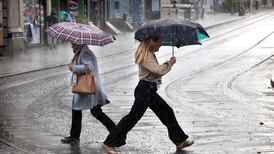The latest official figures, published yesterday, showed that the unemployment rate was just 4 per cent in January, falling from 4.5 per cent the previous month. While too much emphasis should not be placed on monthly swings, there is clear evidence that the Irish jobs market remains strong , with unemployment well below the EU average of 6.3 per cent. Among the prime working age cohort of 25 to 74 years of age, the unemployment rate here is below 3 per cent., according to the Central Statistics Office.
The recovery of the jobs market after Covid-19 shutdowns has been remarkable and the most recent figures show almost 100,000 jobs were added in the year to the third quarter of 2024.
A key policy goal for the new Government must be to hold on to as much of the recent employment gains as possible and continue to build competitiveness for the future. There have already been indications of some cooling in the market. Inward investment has slowed and, according to hiring website Indeed, the number of postings for Irish jobs, while still high, have retreated from post-pandemic highs.
Some cooling in the market may be no bad thing, given the pressure on housing and other social and economic infrastructure, particularly around Dublin. And there are, of course, also other threats on the horizon, not least fears that the tariff and corporate tax policies of US president Donald Trump could hit investment and jobs.
READ MORE
The shape of what Trump might do is not yet clear. In the meantime, however, the Government needs to work on the factors it controls and provide a convincing strategy to address these key issues
Top of the list are shortages in housing and slow delivery of key infrastructure in areas such as water and energy, which are already slowing inward investment. Investors – and, indeed, many voters – are losing confidence in the State’s ability to deliver in these areas. They need to be persuaded that an improved plan is being put in place, focused relentlessly on implementation.
Other measures are necessary, too. An uncertain outlook means that significant resources need to be held in reserve to deal with a potential turndown in public finances. The two new funds established by the previous government are a good start here.
However, there will be tensions between pressure to spend more money and the requirement to set cash aside and maintain a significant surplus. As of now, there should be enough available to meet key investment demands, as well as maintaining sufficient resilience in the public finances. But ministers are always tempted to spend all the available cash. They must realise that Ireland may need resources to support jobs and investment in the years ahead. The continuation of current success cannot be taken for granted.













